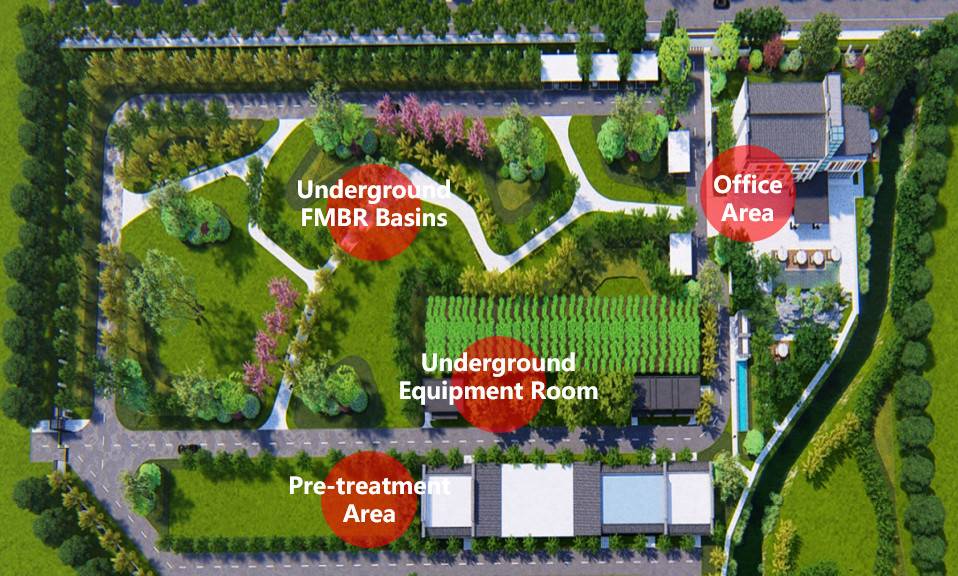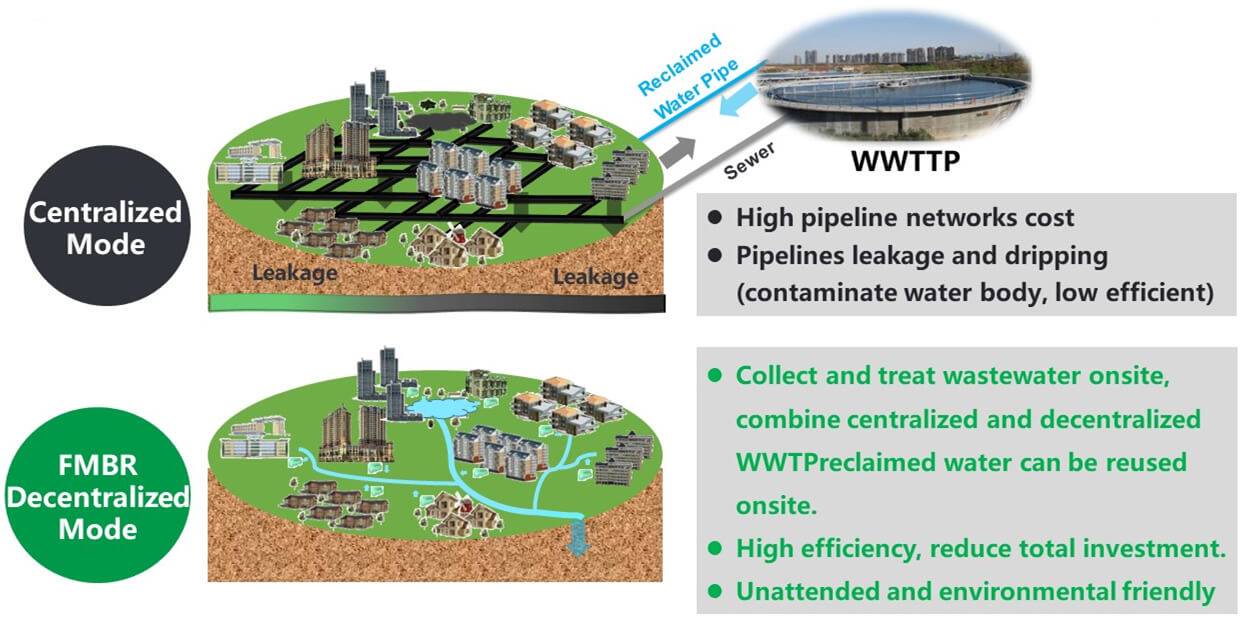FMBR is the abbreviation for facultative membrane bioreactor. FMBR creates a facultative environment to cultivate characteristic microorganism and form a food chain, creatively achieving low organic sludge discharge and simultaneous degradation of pollutants. Due to the efficient separation effect of the membrane, the separation effect is far better than that of the traditional sedimentation tank, the treated effluent is extremely clear, and the suspended matter and turbidity are very low.
Cell’s endogenous respiration is the main mechanism of organic sludge reduction. Due to the large biomass concentration, long SRT and low DO condition, the divers nitrifiers, novel ammonia oxidizing organisms (including AOA, Anammox), and denitrifies can coexist in the same facultative environment, and microbes in the system complete with each other to form a microbial food web and remove C, N and P simultaneously.
Characteristics Of FMBR
● Simultaneous removal of organic carbon, nitrogen and phosphorus
● Less organic residual sludge discharging
● Excellent discharge quality
● Minimum chemical addition for N & P removal
● Short construction period
● Small footprint
● Low cost/low energy consumption
● Reduce carbon emissions
● Automated and unattended
FMBR WWTP Construction Types
Package FMBR Equipment WWTP
The equipment is highly integrated, and the civil work only needs to build the pretreatment, equipment foundation and effluent tank. The footprint is small and the construction period is short. It is suitable for scenic spots, schools, commercial areas, hotels, highways, watershed pollution protection, decentralized treatment, and treatment plants in residential areas, emergency project, WWTP upgrading.

Concrete FMBR WWTP
The appearance of the plant is aesthetic with small footprint, and can be built into an ecological WWTP, which will not affect the city’s appearance. This kind of FMBR WWTP is suitable for the large municipal WWTP project.
FMBR Treatment Mode
The traditional wastewater treatment technology has many treatment processes, so it needs lots of tanks for the WWTPs, which makes the WWTPs a complicated structure with big footprint. Even for a small WWTPs, it also needs many tanks, which will lead to a relative higher construction cost. This is the so called “Scale Effect”. At the same time, the traditional wastewater treatment process will discharge a large number of sludge, and the odor is heavy, which means that the WWTPs can be built near the residential area. This is the so called “Not in My Backyard” problem. With these two problems, the traditional WWTPs are usually in big size and far away from the residential area, so large sewer system with high investment is also required. There will be also a lot of inflow and infiltration in the sewer system, it will not only contaminate the underground water, but will also reduce the treatment efficiency of the WWTPs. According to some studies, the sewer investment will take around 80% of overall wastewater treatment investment.
Decentralized Treatment
The FMBR technology, which is developed by JDL, can reduce the multiple treatment links of traditional technology into one single FMRB link, and the system is highly compacted and is standardized equipment, so the footprint will be smaller and the construction work is easier. At the same time, there is fewer residual organic sludge with almost no odor, so it can be built adjacent the residential area. In conclusion, the FMBR technology is perfectly suitable for the decentralized treatment mode, and realizes “On-site Collect, Treat and Reuse”, which will also reduce the investment in sewer system.


Centralized Treatment
The traditional WWTPs usually adopts concrete structure tanks. This kind of WWTPs takes a large footprint with complex plant structure and heavy odor, and the appearance is unaesthetic. However, by using FMBR technology with features such as simple process, no odor and few residual organic sludge, JDL can build the plant into “treatment system underground and park aboveground” ecological WWTP with wastewater treatment and reusing, which can not only save footprint, but also provide an ecological green space for surrounding residential. The concept of FMBR ecological WWTP provides a new solution and idea for sourcing saving and recycling, and environmentally friendly WWTP.

